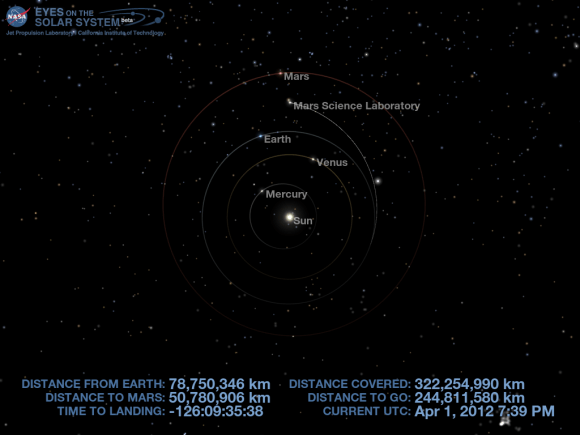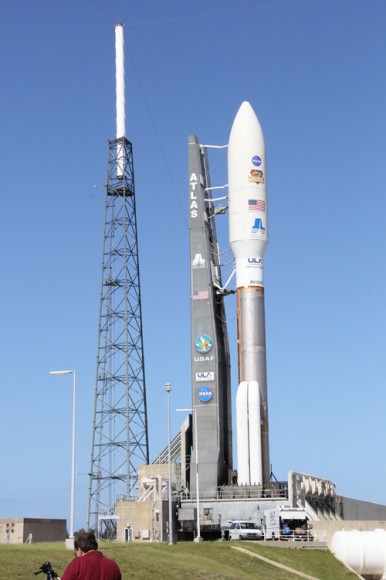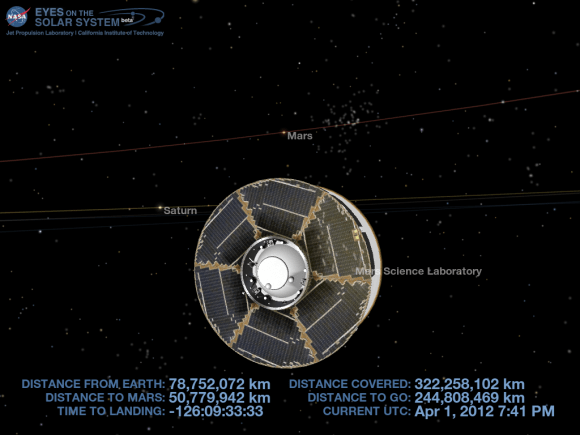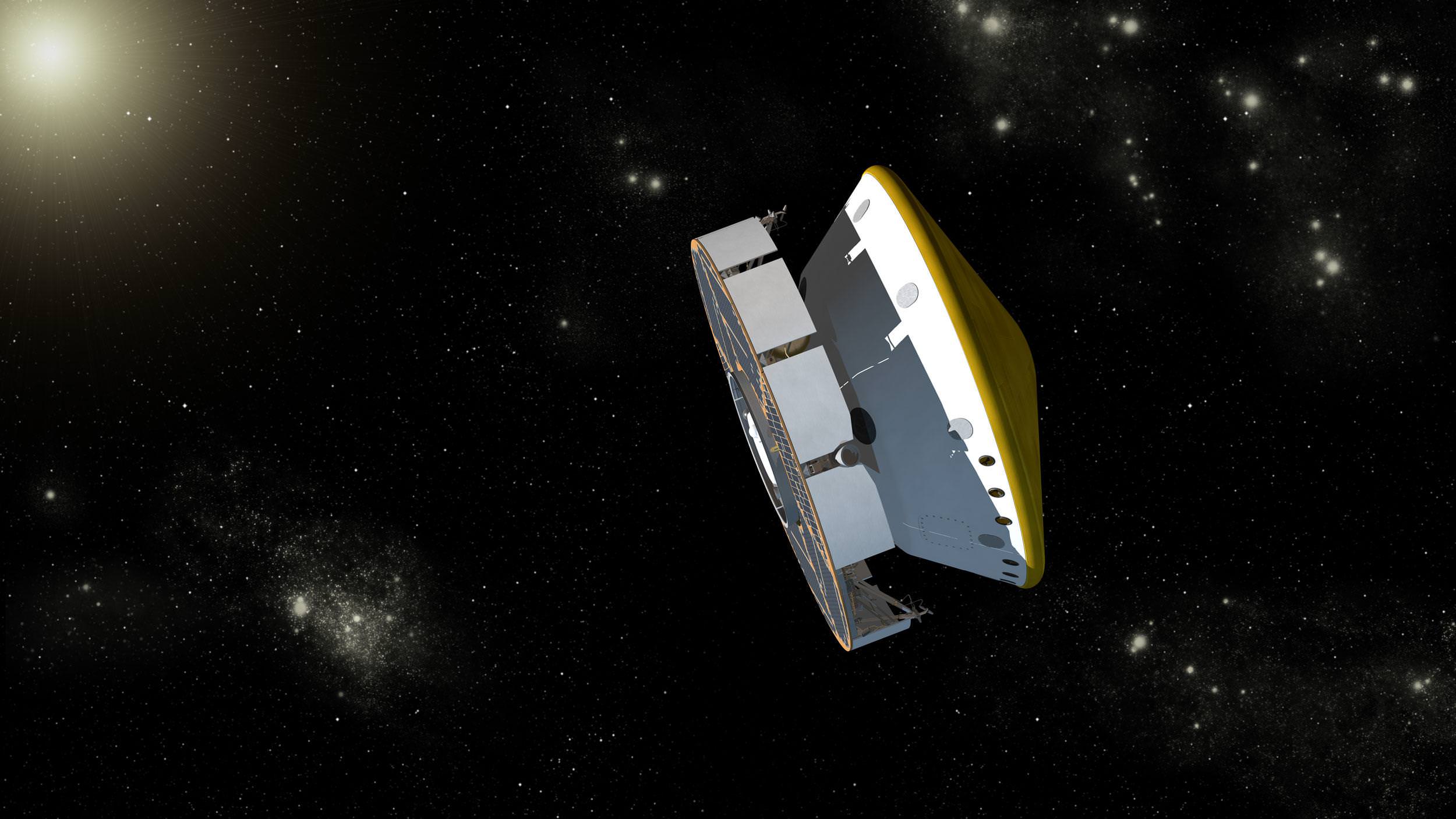[/caption]
As of today, NASA’s car sized Curiosity rover has reached the halfway point in her 352 million mile (567 million km) journey to Mars – No fooling on April 1, 2012.
It’s T Minus 126 days until Curiosity smashes into the Martian atmosphere to brave the hellish “6 Minutes of Terror” – and, if all goes well, touch down inside Gale Crater at the foothills of a Martian mountain taller than the tallest in the continental United States – namely Mount Rainier.
Curiosity will search for the ingredients of life in the form of organic molecules – the carbon based molecules which are the building blocks of life as we know it. The one-ton behemoth is packed to the gills with 10 state of the art science instruments including a 7 foot long robotic arm, scoop, drill and laser rock zapper.
The Curiosity Mars Science laboratory (MSL) rover was launched from sunny Florida on Nov. 26, 2011 atop a powerful Atlas V rocket for an 8.5 month interplanetary cruise from the Earth to Mars and is on course to land on the Red Planet early in the morning of Aug. 6, 2012 EDT and Universal Time (or Aug. 5 PDT).

This roadmap shows Curiosity's flight path through the Solar System - From Earth to Mars during the 8.5 month interplanetary cruise. Credit: NASA/JPL-Caltech
On March 26, engineers at NASA’s Jet Propulsion Laboratory, Pasadena, Calif., successfully ignited the spacecrafts thrusters for the second of six planned trajectory correction maneuvers (TCM’s) to adjust the robot’s flight path during the long journey to achieve a pinpoint landing beside the Martian mountain.
“It is satisfying to get the second maneuver under our belts and know we are headed in the right direction,” said JPL’s Erisa Hines, systems lead for the maneuver. “The cruise system continues to perform very well.”
This maneuver was one-seventh as much as the flight’s first course adjustment, on Jan. 11. The cruise stage is equipped with eight thrusters grouped into two sets of four that fire as the entire spacecraft spins at two rotations per minute. The thruster firings change the velocity of the spacecraft in two ways – along the direction of the axis of rotation and also perpendicular to the axis. Altogether there were more than 60 pulsing maneuvers spaced about 10 seconds apart.
“The purpose is to put us on a trajectory to the point in the Mars atmosphere where we need to be for a safe and accurate landing,” said Mau Wong, maneuver analyst at JPL.

Marking another crucial milestone, the flight team has also powered up and checked the status of all 10 MSL science instruments – and all are nominal.
“The types of testing varied by instrument, and the series as whole takes us past the important milestone of confirming that all the instruments survived launch,” said Betina Pavri of NASA’s Jet Propulsion Laboratory, Pasadena, Calif., science payload test engineer for the mission. “These checkouts provide a valuable calibration and characterization opportunity for the instruments, including camera dark images and a measurement of zero pressure in the vacuum of space for the rover weather station’s pressure sensor.”
Ever since it was the first of MSL’s science instruments to be switched on three months ago, the Radiation Assessment Detector (RAD) has been collecting valuable measurements about the potentially lethal radiation environment in space and acting as a stunt double for determining the potential health effects on future human travelers to Mars.
RAD has been collecting data on the recent wave of extremely powerful solar flares erupting from the sun.
Curiosity has another 244 million kilometers to go over the next 4 months.
All hopes ride on Curiosity as America’s third and last generation of Mars rovers.
Devastating and nonsensical funding cuts to NASA’s Planetary Science budget have forced NASA to cancel participation in the 2018 ExoMars lander mission that had been joint planned with ESA, the European Space Agency. ESA now plans to forge ahead with Russian participation.
Stay tuned

Read Ken’s recent Curiosity feature here:
A Penny for your Curiosity on Mars


Looking good!
But this US rover is “last” in at most the same way that Apollo 17 was the “last” US manned space mission. It may even be just a delay until the next launch window – something that Curiosity itself caused and weathered.
I cross my fingers for a safe landing!! Hope everything goes well! What a blast we’ll have on August 6 when it’s safely there!!
This is SO exciting!!! Cannot wait for the data and pics to start coming through…. 🙂
So exciting! I can spend an entire Sunday afternoon lazily looking through hundreds of photos of Mars. The idea that we are looking at a landscape, millions of Km’s away which is not the Earth is just so fascinating!
FYI, Mt Rainier is the 5th highest peak in the continental US. Mt Whitney in CA and 4 peaks in CO are taller.
Yep. Mt. Rainier highest peak in Washington state, not continental U.S.
And the peak in Gale crater is ~600 meters above Martian areoid.
To be fair, Curiosity has to climb it (or part of it at least for the primary mission). Worryingly, a paper (from the recent Lunar and Planetary Science Conference perhaps) swooshed by the other day, which claimed the crater is backfilled with windblown dust and excavated by wind as I understood it. Mostly aeolian processes, little water, lowered likelihood to find organics.
Hope they find it is at least partly water deposited. Or it was a bad target choice out of the last batch or targets. Of course I expect the layering will still unfold geological history of sorts.
And the peak in Gale crater is ~600 meters above Martian areoid.
And, since Alaska (with Denali) is part of the North American continent, Mt. Whitney is only the tallest in the “Lower 48” (or, more accurately, the contiguous 48) states.
the article said continental u.s.
Right, as in “that part of the U.S. on the continent (i.e. excluding Hawai’i),” which includes Alaska. “Continental U.S.” is an anachronism predating the statehood of Alaska (and Hawai’i), originally used to distinguish the contiguous 48 states from U.S. territories. It should probably be retired, due to the confusion it can create about whether or not its user means to include Alaska. From context, the author certainly meant to exclude Alaska here, but given that there are more accurate terms (e.g. “contiguous 48” or “conterminous 48”), there’s no reason not to use them instead.
Halfway in time not distance. 😉
Mt Ranier? No, you mean Mt. Whitney, California.
” ESA now plans to forge ahead with Russian participation” Given the Russians’ 18 and 0 track record…….
Wonderful! Since this is the maximum time of the compression of our heliosphere due to neutrino heating of Fluff, our local gas cloud. Answers that have been already produced are filling science holes and this best-time for examining Mars will produce also due to thickened gases.
I just hope it lands safely. After reading all the stages it has to go through to do, it seems like there’s a whole lot that can go wrong. Counter-weights shifted and jettisoned, initial rocket firings, parachutes deployed, tethers deployed and release, and final rockets fired. It’s a lot of very complicated stuff happening in a very short time, hundreds of millions of miles away. It’s a LOT to ask. It’ll be a marvel if it does land safely let along accomplishes its missions. I’m hopeful anyway.
It’s all rather bitter sweet. This is the one mission I have looked forward to for so long… and because of our president and politics in general, probably the last chance we will get to see an American expedition to the red planet.